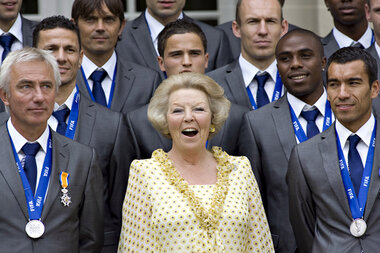
Modernizing the Dutch Monarchy: Queen Beatrix
mikephilipsforcongress.com – Queen Beatrix, born on January 31, 1938, ascended to the throne of the Netherlands on April 30, 1980, following the abdication of her mother, Queen Juliana. Her reign, which lasted until her own abdication on April 30, 2013, was marked by her dedication to modernizing the Dutch monarchy and her active involvement in various social and environmental causes. This article explores the life of Queen Beatrix, focusing on her contributions to the Netherlands and her role in shaping the modern monarchy.
Early Life and Ascension to the Throne
Beatrix was born into the Dutch royal family, the daughter of Queen Juliana and Prince Bernhard of Lippe-Biesterfeld. From a young age, she was groomed for her future role as queen, receiving a comprehensive education that prepared her for the responsibilities of monarchy. Beatrix studied law and political science, demonstrating her commitment to understanding the governance of her future kingdom.
In 1966, Beatrix married Claus von Amsberg, a German diplomat, in a ceremony that was initially met with public protest due to his German heritage. However, over time, Claus became a beloved figure in the Netherlands, and his marriage to Beatrix was seen as a symbol of reconciliation between the Netherlands and Germany.
Modernizing the Monarchy
Upon her ascension to the throne, Queen Beatrix embarked on a mission to modernize the Dutch monarchy. She was known for her approachability and her efforts to make the royal family more relatable to the Dutch people. Beatrix was the first Dutch monarch to engage in state visits abroad, significantly expanding the international role of the Dutch monarchy.
Queen Beatrix was also an advocate for environmental conservation and social justice. She used her platform to raise awareness about climate change, poverty, and human rights, both within the Netherlands and on the global stage. Her commitment to these causes earned her respect and admiration from her subjects and international peers alike.
Abdication and Legacy
In 2013, Queen Beatrix announced her abdication, passing the throne to her eldest son, Willem-Alexander. Her decision was part of a tradition in the Dutch monarchy that allows for voluntary abdication, ensuring a smooth transition of power. Beatrix’s abdication was marked by widespread public support and gratitude for her years of service.
Queen Beatrix’s legacy is that of a modern and compassionate monarch who played a pivotal role in transforming the Dutch monarchy for the 21st century. Her dedication to her country, her advocacy for social and environmental causes, and her efforts to make the royal family more accessible to the Dutch people have left a lasting impact on the Netherlands.
Conclusion
Queen Beatrix’s reign as the Queen of the Netherlands from 1980 to 2013 was characterized by her commitment to modernizing the monarchy and her active involvement in various social and environmental causes. Her legacy is a testament to her dedication to her country and her role in shaping the modern Dutch monarchy. Queen Beatrix’s contributions to the Netherlands and her efforts to make the royal family more relatable to the Dutch people have earned her a place in history as one of the most beloved and respected monarchs of her time.


